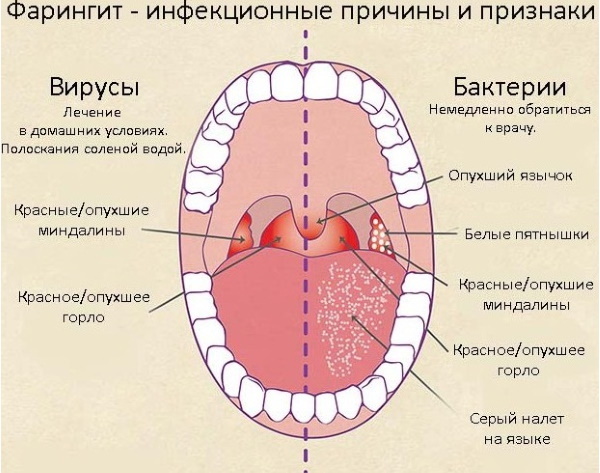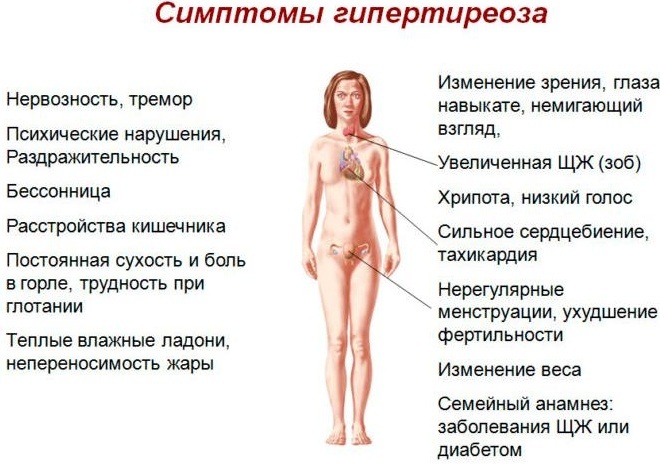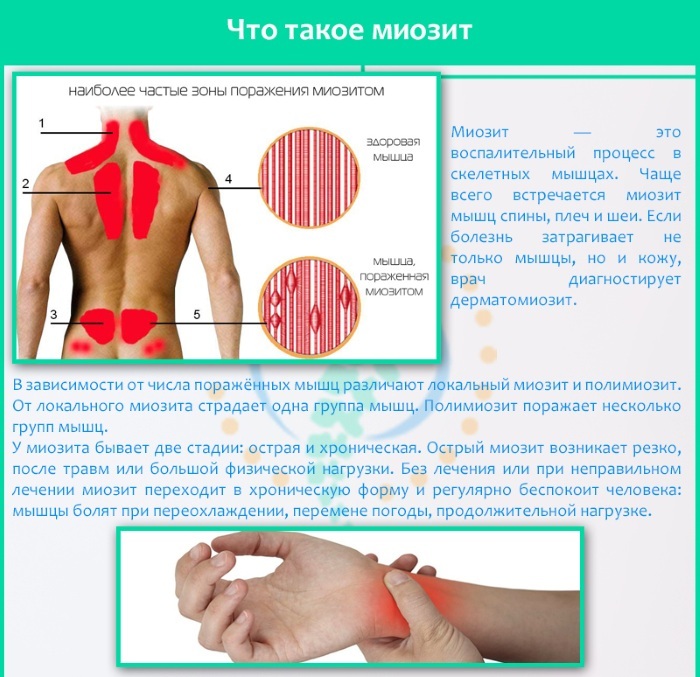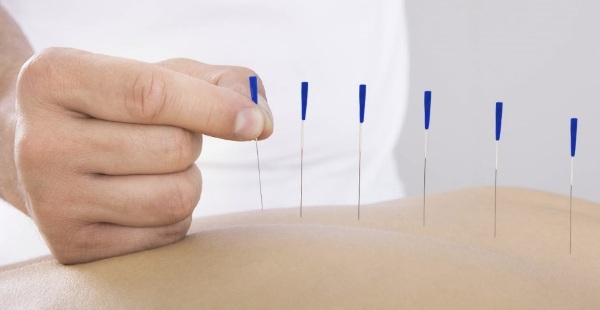Content
- Causes of inflammation in the neck
- Muscle damage
- Inflammation of the lymph nodes
- Inflammatory and colds
- Lateral cyst of the neck
- Thyroid and parathyroid glands
- Nerves
- Cervical myositis
- Treatment methods
- Medicines
- Surgery and other treatments
- Massage
- Herbs and spices
- Warm compresses
- Ice compresses
- Epsom salt
- Apple vinegar
- Alternative treatments
- Possible consequences and complications
- Neck Pain Video
Many people complain that the neck hurts people regardless of gender and age. Doctors consider osteochondrosis and osteoarthritis of the cervical spine to be the main reason. Much less common is front and side pain caused by conditions such as sore throat, swollen lymph nodes, or muscle sprains.
Causes of inflammation in the neck
The involvement of many tissues, bones and blood vessels makes the neck vulnerable and causes various causes of neck pain. When assessing pain in any part of the body, it is important to first consider all the organs that lie in that area. There are no significant bony structures in the front of the neck other than a small hyoid bone.
Therefore, the most important organs or structures in the front of the neck include:
- Muscle group - sternocleidomastoid, supra- and sublingual, platysma (subcutaneous muscle covering the anterior and lateral parts of the neck).
- Veins - external and internal jugular veins.
- Arteries - common carotid arteries, external internal carotid arteries.
- Glands - thyroid and parathyroid.
- Lymph nodes - anterior (superficial and deep).
- The airways are the pharynx, epiglottis, larynx, and trachea.
There are several small nerves located on the sides that branch off from the large cranial nerves. Nerve disorders such as the thyroid-lingual, glossopharynreal, phrenic and recurrent laryngeal nerves should be considered as possible causes of neck pain.
The neck hurts in front, on the sides or behind - all these painful sensations are divided into acute and chronic. The first ones appear suddenly and have a pronounced character. They usually occur after hypothermia, exercise, or heavy lifting. Chronic pain sensations bother a person for a long period of time. They are mild, painful, and worsen after prolonged sitting or sleeping in an uncomfortable position.
Types of pain depending on the location:
| Visceral | It occurs as a result of damage to internal organs. Visceral (reflected) pain may indicate angina pectoris, esophageal or throat disease, acute thyroiditis, or dissection of the vertebral or carotid arteries. | |
| Somatic | Superficial | Superficial pain is activated by nociceptors (sensory neurons) and is usually acute and well localized. It occurs on the skin due to trauma or minor damage deep in the tissue. |
| Deep | Deep pain is dull, poorly localized and suggests damage to deeper structures. | |
| Neuropathic | Caused by irritation of the nerve roots or spinal cord. |

Neck pain is usually caused by muscle tension. Often spreads to the shoulder, arm, can cause numbness of the fingers, for example, when it is transmitted along the nerves and irritates them. Sometimes headaches are also associated with neck tension.
Muscle damage
Muscle sprains are one of the common causes of front neck pain. This affects both the outermost, superficial, and deepest muscles. A common cause of muscle tension is poor posture and prolonged periods of holding the neck in one position, for example, with text (computer) neck syndrome.
Muscles can be injured from a shock or from a car accident. Sudden jolts back and forth on impact can also occur with some contact sports.
In some cases, people with myositis, polymyalgia, and fibromyalgia have pain in the side muscles of the neck. These diseases are characterized by damage to skeletal muscles anywhere. In this case, a person notices pain in the neck from the side when pressed for no apparent reason.
Inflammation of the lymph nodes
The neck hurts in the front, on the sides - this can be a sign of inflammation of the lymph nodes, which become painful for various reasons, including infectious and non-infectious ones.
Nodes are an important part of the immune system. They trap and destroy infectious agents and abnormal cells in the area. Autoimmune diseases and rarely medications can cause cervical nodes to enlarge. They are usually small and hard to find. However, in some cases, it can grow and become painful. This phenomenon should be alarming, it may be associated with malignant tumors.
Most often, pain in the lymph nodes in the neck occurs against the background of inflammation: lymphadenitis, tonsillitis, rhinitis, or an acute viral infection of the respiratory tract. The reason may be their defeat due to metastasis of tumors of the pharynx, esophagus, lungs or other organs.
Signs of cervical lymphadenitis:
- Swollen lymph nodes. In some cases, the size may be 2-3 cm or more.
- The appearance of hyperemia and edema. Lymphadenitis is usually associated with redness of the skin and swelling around swollen lymph nodes;
- Painful sensations when pressed. In this case, the ear, neck from one or both sides may hurt at the same time. It is difficult for the patient to turn his head and make active movements with his shoulders.
Cervical lymph nodes can enlarge with prolonged exposure to a draft. Most often, there is pain in the ear and under the ear in the neck area.
Often, with inflammatory diseases of the pharynx and larynx, the lymph nodes in the neck are enlarged. The cause of the pathology can be hypothermia, infection, the use of low-quality alcohol or accidental contact with the mucous membranes of chemicals. Neck pain that worsens with swallowing suggests involvement of the pharynx, larynx, or esophagus.
Inflammatory and colds
Conditions affecting the pharynx (throat), larynx, trachea (windpipe) can cause pain in the front and side of the neck. Airway inflammation (pharyngitis, laryngitis, and tracheitis) is often due to infections. Another common but lesser known cause of airway inflammation is acid reflux (gastroesophageal reflux disease or GERD). This is the so-called reflux laryngitis.
Most neck pain from sinus infection is caused by inflammation or infection of the sinus cavities behind the eyes. Neck on the sides hurts with a runny nose. The reasons are hypothermia, sudden inhalation of cold air or long walks in the cold.
Diseases that cause pain in the front of the neck with pressure:
- Pharyngitis.
- Laryngitis.
- Diphtheria.
- Infectious mononucleosis.
- Scarlet fever.
- Throat abscess.

If the throat and lower neck are sore, suspect pharyngitis or tracheitis (inflammation of the larynx or windpipe). The development of the disease is caused by a viral infection, inhalation of hot, cold or polluted air. Pathology is characterized by fever, difficulty swallowing, decreased appetite, general weakness.
If the back of the throat hurts, silt pain appears when pressing the neck, swelling and redness on the side of the neck increases, difficulty breathing appears, then there are reasons for this:
- purulent inflammation of the soft tissues of the neck, for example, an abscess (an encapsulated collection of pus);
- phlegmon (bacterial inflammation of the connective tissue).
Lateral cyst of the neck
Vocal cord lesions (nodules, polyps, or cysts) can also cause pain in the front of the neck.
A cyst is a sac-like structure filled with liquid, gaseous, or solids. It can range in size from microscopic to very large. In many cases, a neck cyst can be confused with cancer, but unlike cancerous tumors, such neoplasms are rarely alarming.
There are various causes of a cyst in the neck, including blockages in the normal ducts, cell abnormalities, inflammatory diseases, or infections. Unlike cancerous tumors, cysts usually do not grow quickly or spread to other parts of the body. When feeling for a lump, there are ways to distinguish a malignant tumor from a benign one. Cysts are usually smoother and can move under the skin. Cancer often has indefinite facets, it is very hard and immobile.
Patients should not try to diagnose a cyst on their own. Any lumps on the neck should be checked by a doctor. In most cases, a neck cyst does not require treatment. The patient is advised to check the neck area from time to time to make sure the cyst is not growing.
If the cyst is very large, affects another system in the body, or displaces veins or arteries in the neck, surgery may be required to remove the lump. Sometimes a cyst can be a sign of an underlying medical condition, such as a thyroid problem.
In some cases, the lump may be painful to the touch. Sometimes the cyst is cut or opened to drain fluid and relieve pressure. However, if this area is filled with pus and not fluid, it is not considered a cyst but an abscess.
Thyroid and parathyroid glands
Some thyroid and parathyroid problems can be accompanied by pain. It is important to note that most causes of hypothyroidism (an underactive thyroid gland) or hyperthyroidism (an overactive thyroid gland) are painless. However, conditions such as thyroiditis (inflammation of the endocrine gland), some forms of thyroid nodules and enlargement (goiter) can be painful when pressed. Similar conditions can affect the parathyroid glands.
However, conditions such as thyroiditis (inflammation of the endocrine gland), some forms of thyroid nodules and enlargement (goiter) can be painful when pressed. Similar conditions can affect the parathyroid glands.
Nerves
Inflammatory processes in the front of the neck can be either isolated or part of the lesion of the nervous system of the whole body. Local neuritis develops due to injuries, spread of inflammation from adjacent tissues, infections, when the nerve is compressed by growing cysts, tumors. Systemic nerve damage can develop in acute poisoning with lead, arsenic, carbon monoxide, as well as in chronic alcoholism.
Cervical myositis
Myositis is a group of inflammatory diseases of muscle tissue. Inflammation can affect muscle contraction and weaken them. Myositis of the neck muscles is a fairly common problem that is caused by many reasons. Sometimes the inflammation lasts only a few days or weeks, and in some cases, the symptoms persist for several months.
In some cases, cervical myositis is the result of infections, usually viral. The most common cause of infectious inflammation is influenza. Another type of infectious myositis of the neck muscles (and other muscle groups) is pyomyositis, a bacterial infection most often caused by staphylococci. With this disease, abscesses form in the muscle tissue - small cavities with pus inside.
The main symptom of neck pyomyositis is usually severe pain in the abscess area. After a while, a well-pronounced swelling appears in this place, the neck becomes less mobile, certain movements cause pain. The skin over the abscess may be reddish and hot. With the spread of infection, an increase in body temperature and general malaise are possible.
Treatment methods
Doctors recommend medication as the first treatment option for neck pain based on diagnosis and symptoms. In the future, physiotherapy is prescribed, exercises that can relieve pain in the long term.
Medicines
The neck hurts in front, on the sides - this can be caused by inflammation of the surrounding nerves and muscles. Non-steroidal anti-inflammatory drugs (NSAIDs) like Iibuprofen, Naproxen, Aspirin relieve pain by reducing inflammation.
If your neck pain is disabling and interferes with your daily activities, your doctor may prescribe stronger drugs for short-term pain relief.
- Muscle relaxants. Muscle relaxant therapy relieves muscle spasticity and relieves pain. Mydocalm is administered nutrimusally about 100 mg 2 times / day, the tablet form is prescribed at 150 mg three times / day.
- Corticosteroids. If other medications do not relieve pain, your doctor recommends corticosteroids to reduce inflammation, reduce pressure on the affected nerve, and relieve pain. Steroids are usually taken for 7-10 days, after which the doctor reevaluates the symptoms before recommending further treatment.
-
Paracetamol and Ibuprofen, used for colds will relieve neck pain.

Treatments for sinus infections include antihistamines or special nasal sprays. In some cases, neck pain associated with inflammation of the sphenoid sinuses (the sinuses closest to the brain) is treated with antibiotics.
Surgery and other treatments
For metastatic lymph nodes, surgical treatment usually involves cutting the neck to remove the lymph nodes and check for cancer. This is usually done at the same time as removing the primary tumor, although not always. The dissection of the neck provides the exact stage of the pathological lymph node, which can be used to determine the need for further treatment.
Radiation therapy involves directing an external beam of radiation to cancerous lymph nodes in the neck to kill rapidly dividing cancer cells. For the treatment of metastatic lymph nodes, radiation therapy can be either the main treatment or an adjuvant treatment after surgery to reduce the likelihood of tumor recurrence.
Adjuvant radiation therapy is usually needed if multiple lymph nodes are found to be malignant at the last pathology after neck dissection.
Chemotherapy is added to radiation therapy for advanced cancer that is treated with primary non-surgical treatment or adjuvant radiation therapy. In addition, chemotherapy can be used in cases where extranodal enlargement from malignant lymph nodes has been identified in the final pathology.
Massage
For the procedure, you can use sesame, almond, olive or jojoba oil. Essential oils such as lavender, rosemary, pine and juniper oils can be added to these oils for effective relaxation. The massage will warm the neck and improve blood circulation. It is important to massage gently to relieve stiffness.
Massaging the lymph nodes stimulates the nodes and helps them to function normally. In addition, it reduces the accumulation of impurities at the nodes.
Gently massage the lymph nodes with your fingers for 5 minutes. The procedure is repeated 2-3 times a day until the tumor disappears. You can also contact a professional who will do a lymphatic drainage massage.
Herbs and spices
Herbs such as mint, parsley, basil, thyme have excellent healing and anti-inflammatory properties. T Spices - ginger, turmeric powder - have anti-inflammatory properties that can help reduce neck inflammation. You can also try other herbs such as arnica, licorice, devil's claw, and white willow.
Not only eating, but also gargling with herbal infusions, as well as salt water can be useful in reducing swelling and inflammation in the lymph nodes in the neck caused by infection in throat.
- Mix ½ tsp. l. salt or ½ glass of herbal infusion with 1 glass of warm water.
- Gargle with a solution 2 times a day for a week.
Warm compresses
An easy and effective way to relieve pain caused by the cold or flu virus is to use an ice pack or heating pad. Heat relaxes tense neck muscles and ice relieves inflammation.
A time-tested remedy for reducing swelling of the lymph nodes is warm compresses. The high temperature helps improve blood circulation, which in turn reduces swelling and pain.
- Soak a towel in hot water and squeeze out excess water.
- Apply a compress to swollen lymph nodes for 5-10 minutes.
- Repeat the procedure several times a day until the swelling disappears.
Ice compresses
Cold treatment is also one of the best natural remedies for neck inflammation and stiffness, and helps with acute pain. Ice relieves inflammation, soreness and swelling.
Epsom salt
Another natural remedy for inflammation is using Epsom salts while taking a bath. It is an effective remedy composed of sulphate and magnesium. With its help, activity in the affected area is regulated, blood flow increases. Salt reduces soreness, stress, and tension in the neck. To do this, you can take a hot Epsom salt bath for about 5 minutes or apply a salt compress to your neck.
Apple vinegar
Acid is a popular natural remedy for inflammation. Cover the neck area with a cloth dipped in apple cider vinegar and leave for several hours. Plus, its antibacterial properties help fight any infection.
- Mix equal amounts of raw, unfiltered apple cider vinegar and water.
- Moisten a cloth in the solution and apply it to the swollen area.
- Wait 5 minutes, then rinse with warm water, wipe dry.
- Repeat 1-2 times a day.
Alternative treatments
The neck hurts in front, on the sides - this means that, first of all, an informative examination of the neck should be carried out, to identify the causes.
Based on the diagnosis, the doctor may prescribe additional treatment methods:
- acupuncture;

- magnetotherapy;
- chiropractors;
- Ayurveda;
- yoga;
- homeopathy;
- aromatherapy.
However, these treatments work in different ways, so after consulting a doctor, it is recommended that you seek the help of a specialist.
Possible consequences and complications
Every neck surgery that requires medication and incisions comes with certain risks. including those with the risk of infection or allergic reaction, which may be of vital importance effects.
Chronic neck myositis can lead to muscle wasting and serious consequences.
Most neck pain is associated with poor posture combined with age-related deterioration of the bone and cartilage structure. The rest of the reasons are very rare. If the neck hurts in the front or on the sides with a cold, then medications for the underlying disease and compresses will help to quickly relieve symptoms. In case of inflammation of the lymph nodes, you should undergo diagnostic procedures at the clinic.
Neck Pain Video
What can hurt in the neck:



